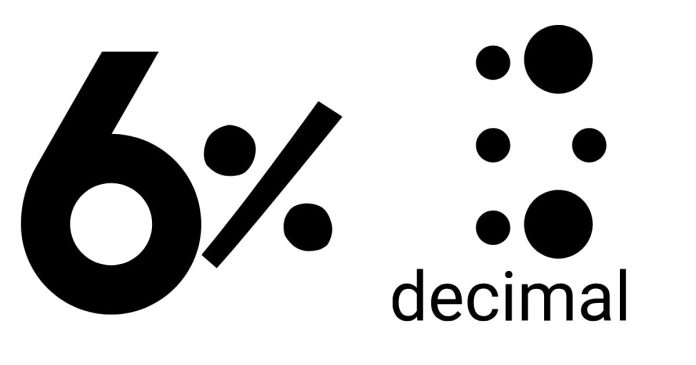Understanding how to convert percentages to decimals is a fundamental math skill that comes in handy in various real-world scenarios, from calculating discounts to solving scientific problems. Let’s explore how to express 6% as a decimal, step by step.
What Does 6% Mean?
The term “percent” comes from the Latin phrase per centum, meaning “by the hundred.” When you see a percentage like 6%, it represents a fraction of 100. In mathematical terms:
Converting 6% to a Decimal
To convert 6% to a decimal, follow these simple steps:
- Divide by 100: A percentage is a ratio out of 100, so dividing the percentage value by 100 converts it into its decimal form:
6÷100=0.066 \div 100 = 0.06
- Shift the Decimal Point: Alternatively, you can simply shift the decimal point two places to the left to convert a percentage into a decimal. For 6%:
- Start with 6.0 (implicitly, there’s a decimal point after the whole number).
- Shift the decimal two places to the left: 6.0→0.066.0 → 0.06
Why Convert Percentages to Decimals?
Converting percentages to decimals is useful because decimals are easier to work with in equations and calculations. For example:
- Interest Rates: If an interest rate is 6%, expressing it as a decimal (0.06) allows you to calculate interest accurately.
- Discounts: To find a 6% discount on a $50 item, multiply the price by 0.06: 50×0.06=350 \times 0.06 = 3 The discount is $3.
Practice Examples
- Convert 25% to a decimal:
25÷100=0.2525 \div 100 = 0.25
- Convert 0.5% to a decimal:
0.5÷100=0.0050.5 \div 100 = 0.005
- Convert 150% to a decimal:
150÷100=1.5150 \div 100 = 1.5
The decimal representation of 6% is 0.06. Converting percentages to decimals is a straightforward process that involves dividing the percentage by 100 or shifting the decimal point two places to the left. This skill is essential for everyday tasks, including financial calculations, scientific measurements, and data analysis.



